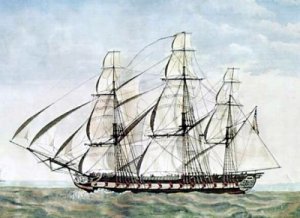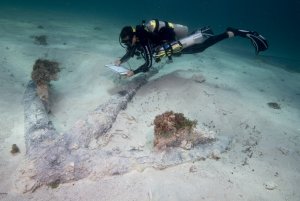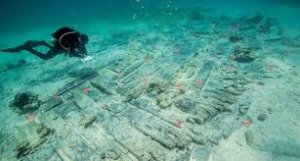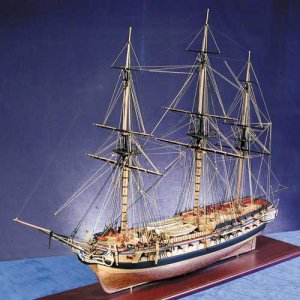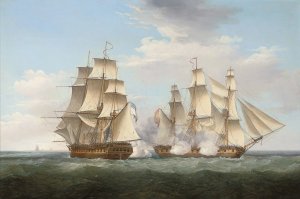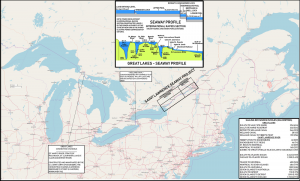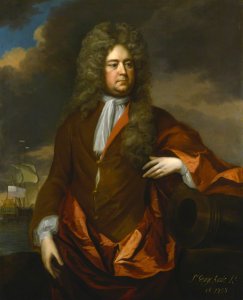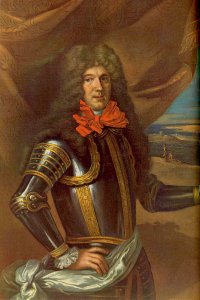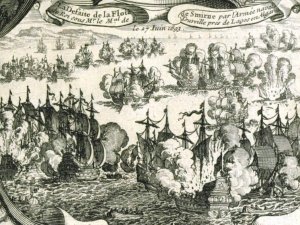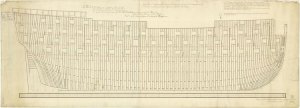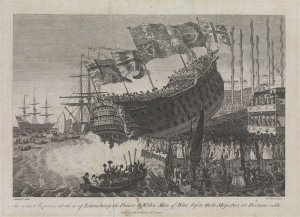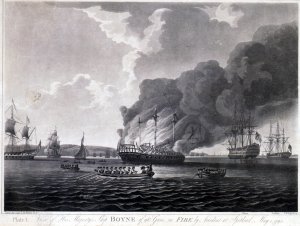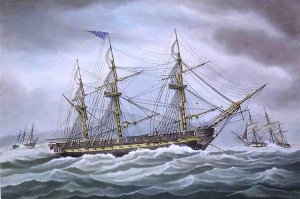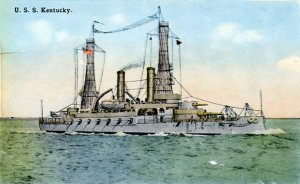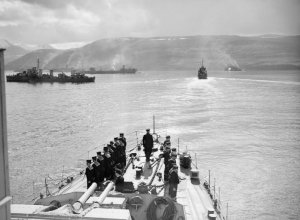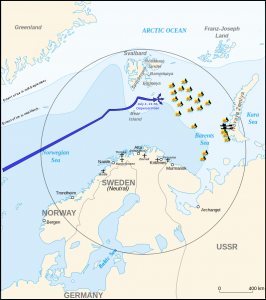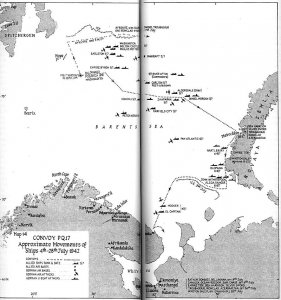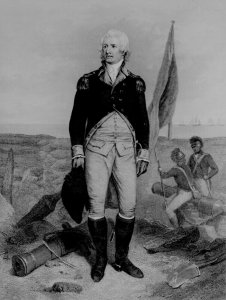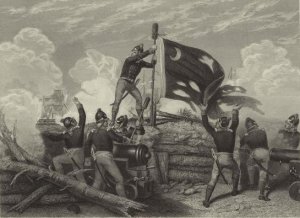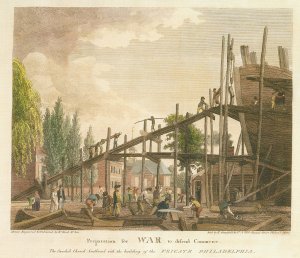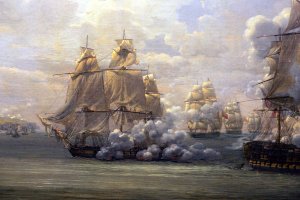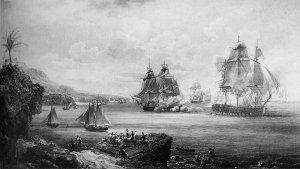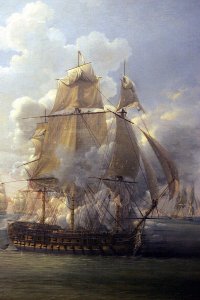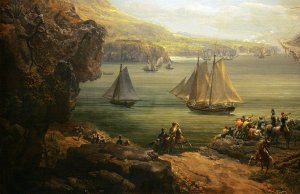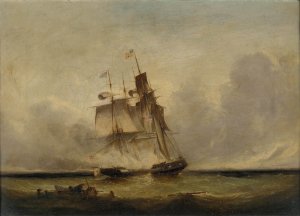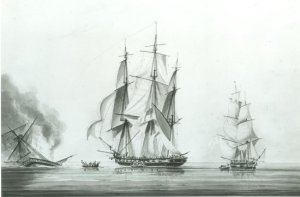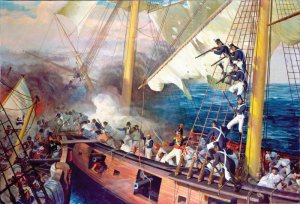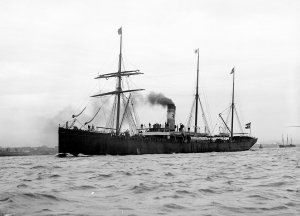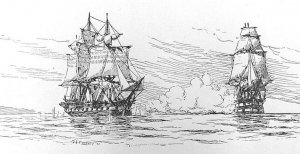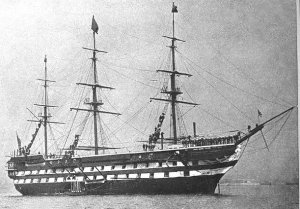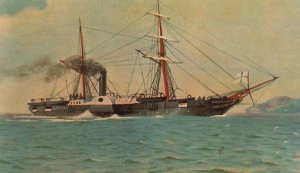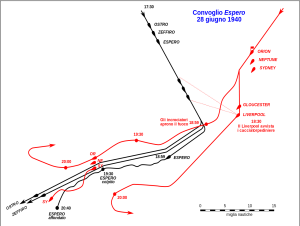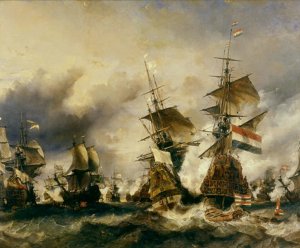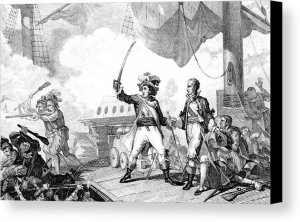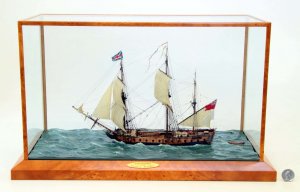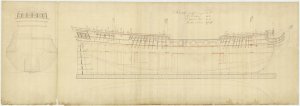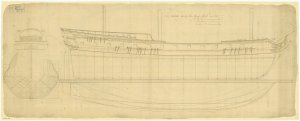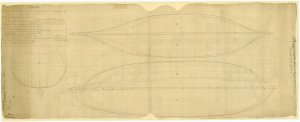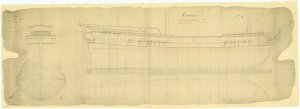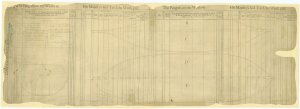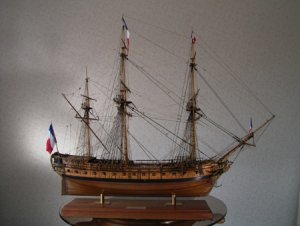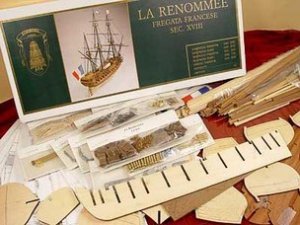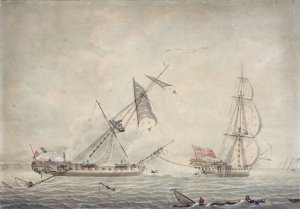27 June 1905 - Mutiny aboard the russian battleship Potemkin starts
(post with full film)
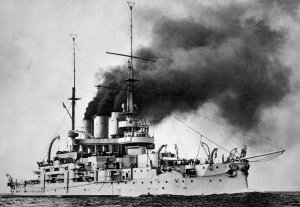
During the
Russo-Japanese War of 1904–05, many of the Black Sea Fleet's most experienced officers and enlisted men were transferred to the ships in the Pacific to replace losses. This left the fleet with primarily raw recruits and less capable officers. With the news of the disastrous
Battle of Tsushima in May 1905 morale dropped to an all-time low, and any minor incident could be enough to spark a major catastrophe. Taking advantage of the situation, plus the disruption caused by the
ongoing riots and uprisings, the Central Committee of the Social Democratic Organisation of the Black Sea Fleet, called "Tsentralka", had started preparations for a simultaneous mutiny on all of the ships of the fleet, although the timing had not been decided.
On 27 June 1905,
Potemkin was at gunnery practice near Tendra Island off the Ukrainian coast when many enlisted men refused to eat the
borscht made from rotten meat partially infested with
maggots. The uprising was triggered when
Ippolit Giliarovsky, the ship's second in command, allegedly threatened to shoot crew members for their refusal. He summoned the ship's marine guards as well as a
tarpaulin to protect the ship's deck from any blood in an attempt to intimidate the crew. Giliarovsky was killed after he mortally wounded
Grigory Vakulinchuk, one of the mutiny's leaders. The mutineers killed seven of the
Potemkin's eighteen officers, including Captain Evgeny Golikov, and captured the
torpedo boat Ismail (No. 627). They organized a ship's committee of 25 sailors, led by
Afanasi Matushenko, to run the battleship.
The committee decided to head for
Odessa flying a
red flag and arrived there later that day at 22:00. A
general strike had been called in the city and there was some
rioting as the police tried to quell the strikers. The following day the mutineers refused to land armed sailors to help the striking revolutionaries take over the city, preferring instead to await the arrival of the other battleships of the Black Sea Fleet. Later that day the mutineers aboard the Potemkin captured a military transport,
Vekha, that had arrived in the city. The riots continued as much of the port area was destroyed by fire. On the afternoon of 29 June, Vakulinchuk's funeral turned into a political demonstration and the army attempted to ambush the sailors who participated in the funeral. In retaliation, the ship fired two six-inch shells at the theatre where a high-level military meeting was scheduled to take place, but missed.
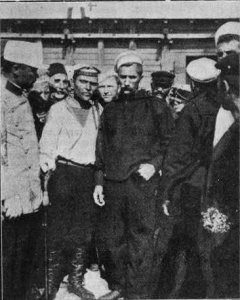 Matushenko, the leader of the mutiny, is seen to the left of centre. Photo taken July, 1905, after arrival at Constanța – officer at left is in Romanian uniform.
Matushenko, the leader of the mutiny, is seen to the left of centre. Photo taken July, 1905, after arrival at Constanța – officer at left is in Romanian uniform.
The government issued an order to send two
squadrons to Odessa either to force the
Potemkin's crew to give up or sink the battleship.
Potemkin sortied on the morning of 30 June to meet the three
battleships Tri Sviatitelia,
Dvenadsat Apostolov, and
Georgii Pobedonosets of the first squadron, but the loyal ships turned away. The second squadron arrived with the battleships
Rostislav and
Sinop later that morning, and Vice Admiral
Aleksander Krieger, acting commander of the Black Sea Fleet, ordered the ships to proceed to Odessa.
Potemkin sortied again and sailed through the combined squadrons as Krieger failed to order his ships to fire. Captain Kolands of
Dvenadsat Apostolov attempted to
ram Potemkin and then detonate his ship's magazines, but he was thwarted by members of his crew. Krieger ordered his ships to fall back, but the crew of
Georgii Pobedonosets mutinied and joined
Potemkin.
The following morning, loyalist members of
Georgii Pobedonosets retook control of the ship and ran her aground in Odessa harbor. The crew of
Potemkin, together with
Ismail, decided to sail for Constanța later that day where they could restock food, water and coal. The Romanians
refused to provide the supplies, backed by the presence of their small
protected cruiser Elisabeta, so the ship's committee decided to sail for the small, barely defended port of
Theodosia in the
Crimea where they hoped to resupply. The ship arrived on the morning of 5 July, but the city's governor refused to give them anything other than food. The mutineers attempted to seize several barges of coal the following morning, but the port's garrison ambushed them and killed or captured 22 of the 30 sailors involved. They decided to return to Constanța that afternoon.
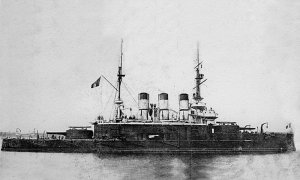 Potemkin
Potemkin at anchor with the Romanian flag hoisted on her mast, Constanța, July 1905
Potemkin reached its destination at 23:00 on 7 July and the Romanians agreed to give asylum to the crew if they would disarm themselves and surrender the battleship.
Ismail's crew decided the following morning to return to Sevastopol and turn themselves in, but
Potemkin's crew voted to accept the terms. Captain Negru, commander of the port, came aboard at noon and hoisted the Romanian flag and then allowed the ship to enter the inner harbor. Before the crew disembarked, Matushenko ordered that the
Potemkin's
Kingston valves be opened so she would sink to the bottom.
When Rear Admiral Pisarevsky reached Constanța on the morning of 9 July, he found the
Potemkin half sunk in the harbor and flying the Romanian flag. After several hours of negotiations with the Romanian Government, the battleship was handed over to the Russians. Later that day the
Russian Navy Ensign was raised over the battleship. She was then easily refloated by the navy, but the salt water had damaged its engines and boilers. The ship left Constanța on 10 July, having to be towed back to Sevastopol, where she arrived on 14 July. The ship was renamed
Panteleimon (
Russian: Пантелеймон), after
Saint Pantaleon, on 12 October 1905. Some members of
Panteleimon's crew joined a mutiny that began aboard the cruiser
Ochakov in November, but it was easily suppressed as both ships had been earlier disarmed.
The film about the Mutiny
The mutiny was memorialized most famously by
Sergei Eisenstein in his 1925 silent film
Battleship Potemkin, although the French
silent film La Révolution en Russe (
Mutiny on a Man-of-War in Odessa or
Revolution in Odessa, 1905), directed by
Ferdinand Zecca or
Lucien Nonguet (or both), was the first film to depict the mutiny, preceding Eisenstein's far more famous film by 20 years. Filmed shortly after the Bolshevik victory in the Russian Civil War of 1917–22, with the derelict battleship
Dvenadsat Apostolov standing in for the broken-up
Potemkin, Eisenstein recast the mutiny into a predecessor of the
October Revolution of 1917 that swept the Bolsheviks to power. He emphasized their role, and implied that the mutiny failed because Matushenko and the other leaders were not better Bolsheviks. Eisenstein made other changes to dramatize the story, ignoring the major fire that swept through Odessa's dock area while
Potemkin was anchored there, combining the many different incidents of rioters and soldiers fighting into a famous sequence on the steps (today known as
Potemkin Stairs), and showing a tarpaulin thrown over the sailors to be executed.
Battleship Potemkin (
Russian: Бронено́сец «Потёмкин»,
Bronenosets Potyomkin), sometimes rendered as
Battleship Potyomkin, is a 1925 Soviet
silent film directed by
Sergei Eisenstein and produced by
Mosfilm. It presents a dramatized version of the
mutiny that occurred in 1905 when the crew of the
Russian battleship Potemkin rebelled against their officers.
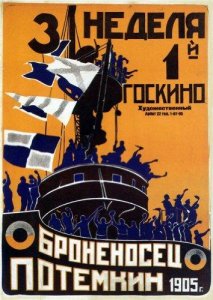
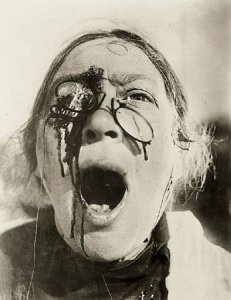 Battleship Potemkin was named the greatest film of all time at the Brussels World's Fair in 1958.
Battleship Potemkin was named the greatest film of all time at the Brussels World's Fair in 1958.
In 2012, the British Film Institute named it the eleventh-greatest film of all time.
The film in full version:
The battleship
The
Russian battleship Potemkin (
Russian: Князь Потёмкин Таврический,
translit. Kniaz Potyomkin Tavricheskiy, "Prince Potemkin of
Taurida") was a
pre-dreadnought battleship built for the
Imperial Russian Navy's
Black Sea Fleet. She became famous when the crew rebelled against the officers in June 1905 (during
that year's revolution), which is now viewed as a first step towards the
Russian Revolution of 1917. The mutiny later formed the basis of
Sergei Eisenstein's 1925
silent film The Battleship Potemkin.
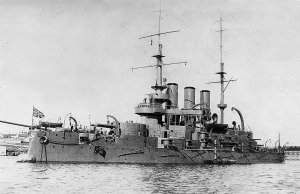
After the mutineers sought asylum in
Constanța, Romania, and after the Russians recovered the ship, her name was changed to
Panteleimon. She accidentally sank a Russian
submarine in 1909 and was badly damaged when she
ran aground in 1911. During
World War I,
Panteleimon participated in the
Battle of Cape Sarych in late 1914. She covered several bombardments of the
Bosphorus fortifications in early 1915, including one where the ship was attacked by the Turkish
battlecruiser Yavuz Sultan Selim –
Panteleimon and the other Russian pre-dreadnoughts present drove her off before she could inflict any serious damage. The ship was relegated to secondary roles after Russia's first
dreadnought battleship entered service in late 1915. She was by then obsolete and was reduced to
reserve in 1918 in
Sevastopol.
Panteleimon was captured when the Germans took Sevastopol in May 1918 and was handed over to the
Allies after the
Armistice in November 1918. Her engines were destroyed by the British in 1919 when they withdrew from Sevastopol to prevent the advancing
Bolsheviks from using them against the
White Russians. She was abandoned when the Whites evacuated the
Crimea in 1920 and was finally
scrapped by the Soviets in 1923.
https://en.wikipedia.org/wiki/Russian_battleship_Potemkin
https://en.wikipedia.org/wiki/Battleship_Potemkin
http://www.steelnavy.com/CombrigPanteleimon.htm
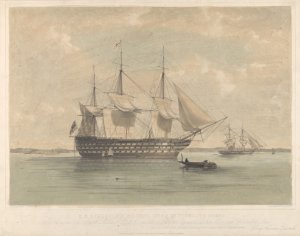

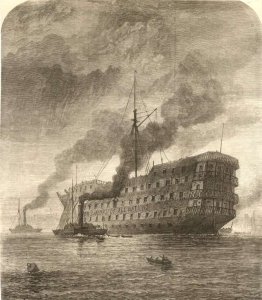






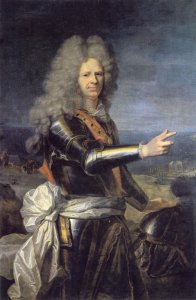
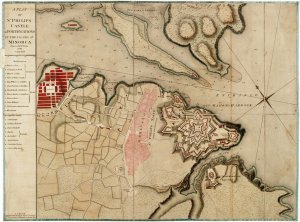
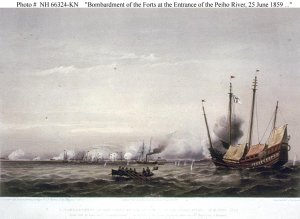
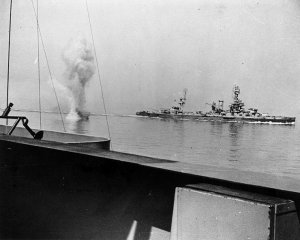
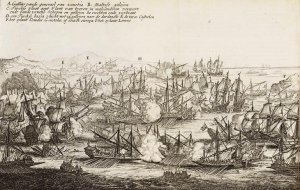
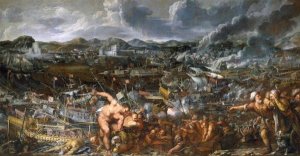
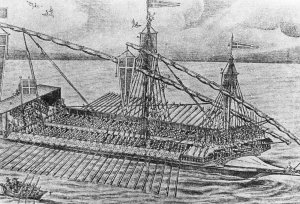
 age in
age in 